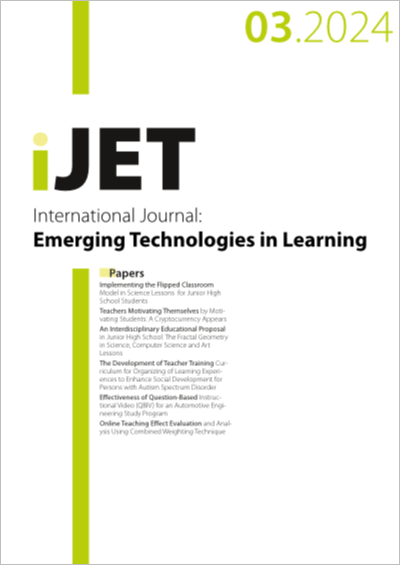Implementing the Flipped Classroom Model in Science Lessons for Junior High School Students
DOI:
https://doi.org/10.3991/ijet.v19i03.47153Keywords:
Flipped Classroom, Junior High School, Learning, Physics, TeachingAbstract
The present study refers to the idea of the flipped classroom. The flipped or otherwise called inverted classroom is a modern teaching concept, which essentially reverses the terms of the traditional learning method. The students study the lesson beforehand, outside the classroom using new technologies, while the time inside the classroom is mainly devoted to discussions and solving questions by the educator, hands-on activities that stimulate the students’ interest and connect the acquired knowledge with everyday problems. Reversing the traditional teaching process appears to be paying off for students, as since utilizing classical teaching techniques, their performance seemed to decline over time. For this purpose, the flipped classroom method was applied in a junior high school class in Athens, Greece, for Physics lessons during the 2022–2023 school year. At the end of the school year, the students that participated in the flipped classroom completed a survey that was developed jointly with the cooperation of the respective teachers who taught the course in order to establish the degree of the students’ acceptance of the specific method. The results of the survey and a correlation of the students’ performance who participated in the flipped classroom with the performance achieved by the rest of the students that followed traditional teaching methods, as well as with the previous year’s students’ performance who also followed the classical teaching model, are analyzed and discussed.
Downloads
Published
How to Cite
Issue
Section
License
Copyright (c) 2024 Nikos Bessas, Eleni Tzanaki, Dionisios Vavougios, Vassilis P. Plagianakos

This work is licensed under a Creative Commons Attribution 4.0 International License.



